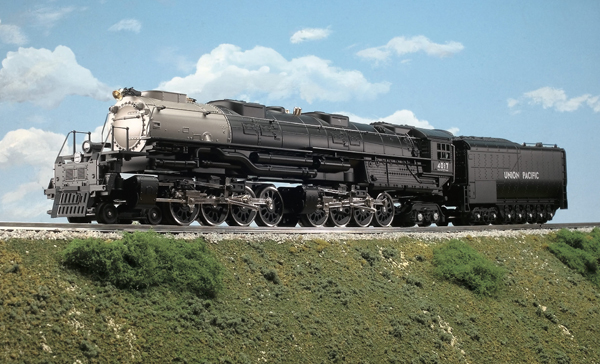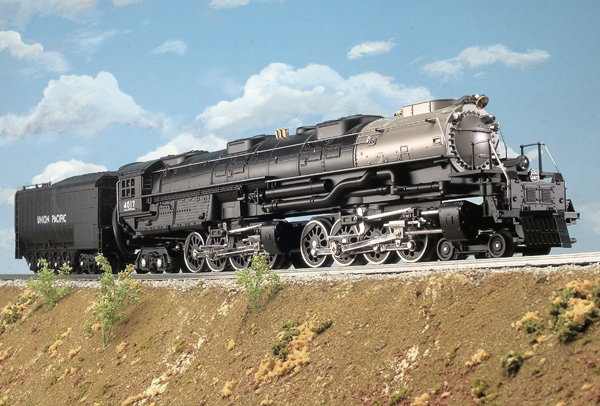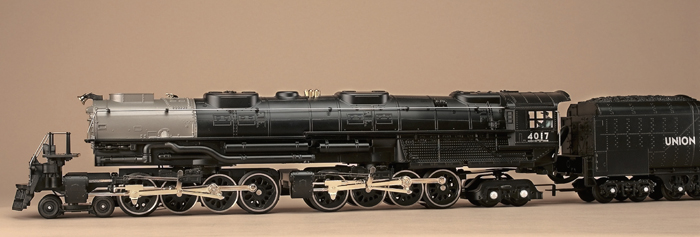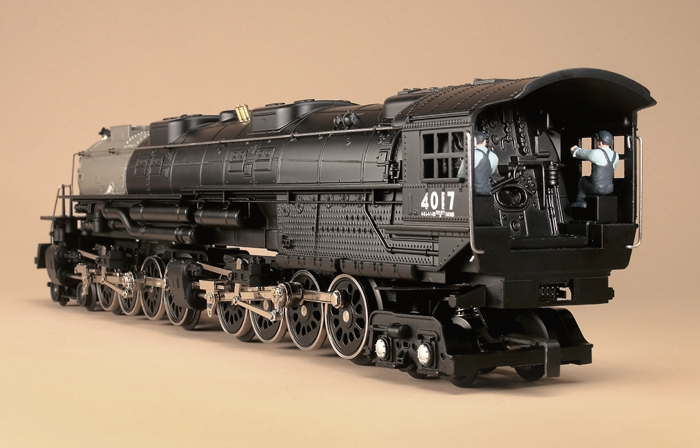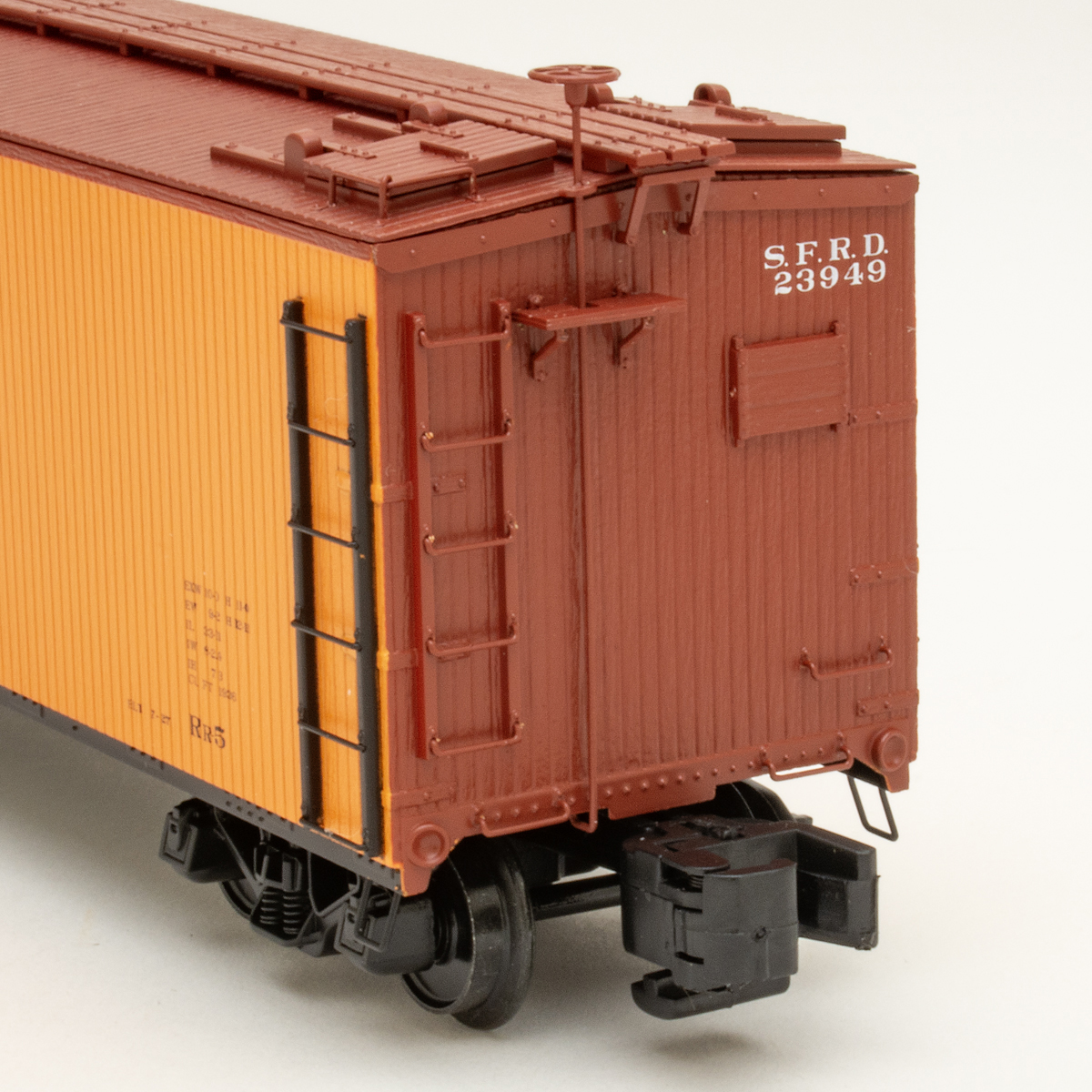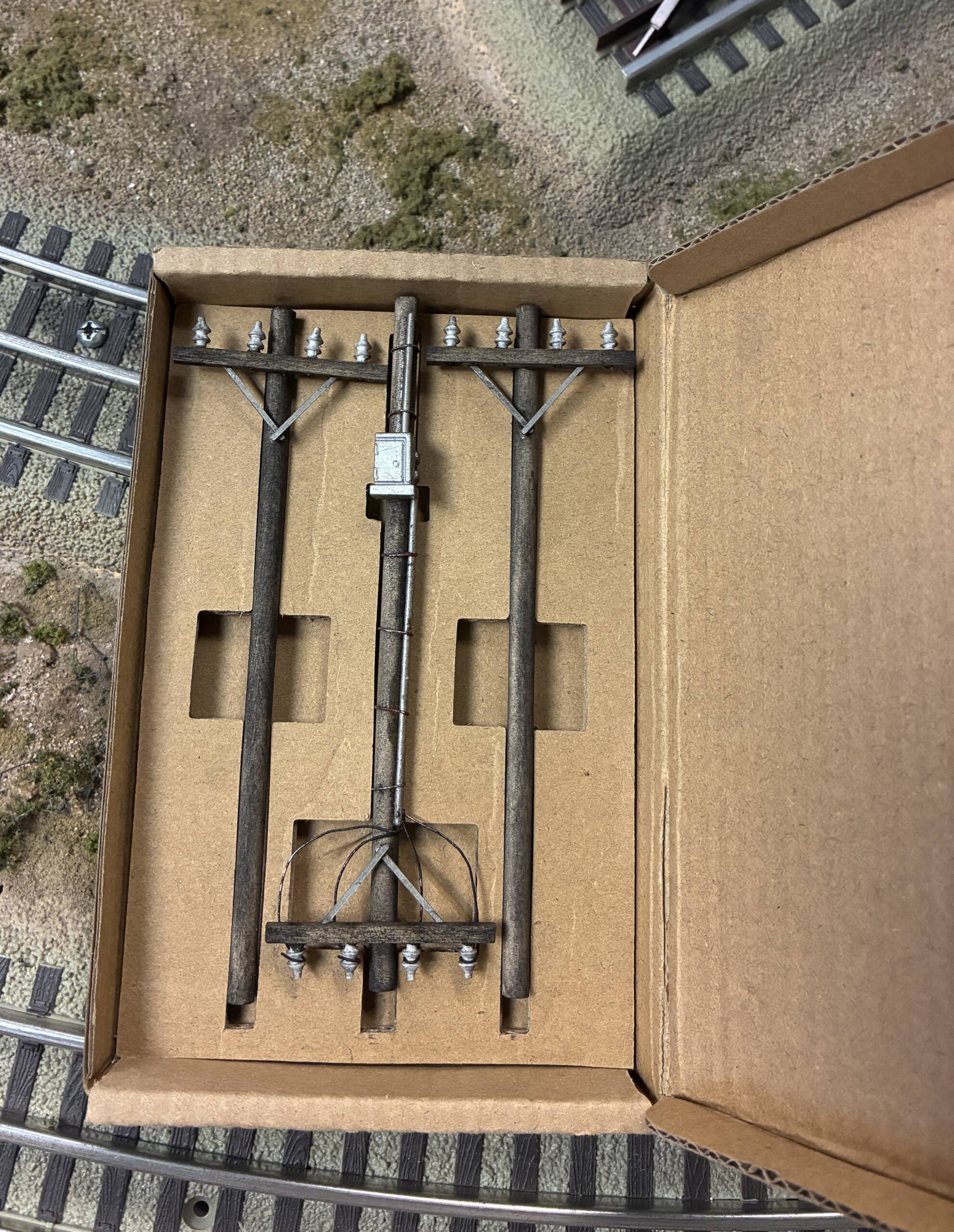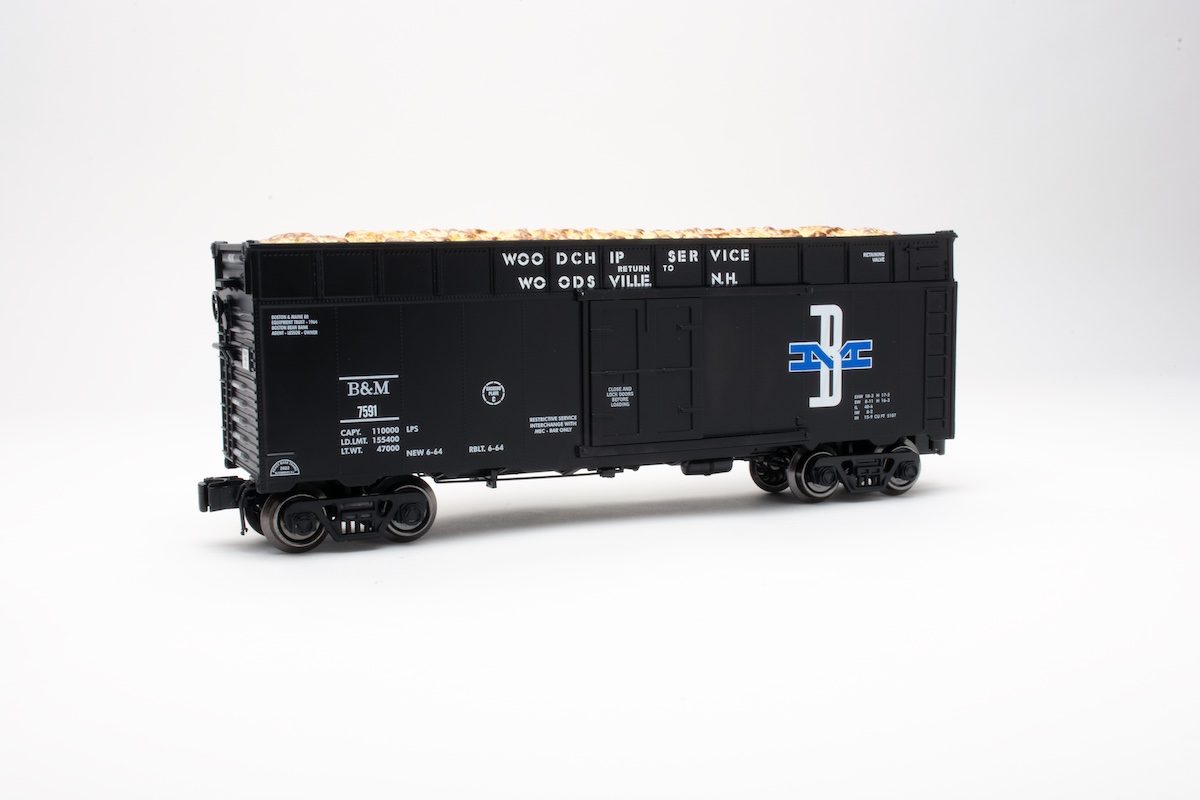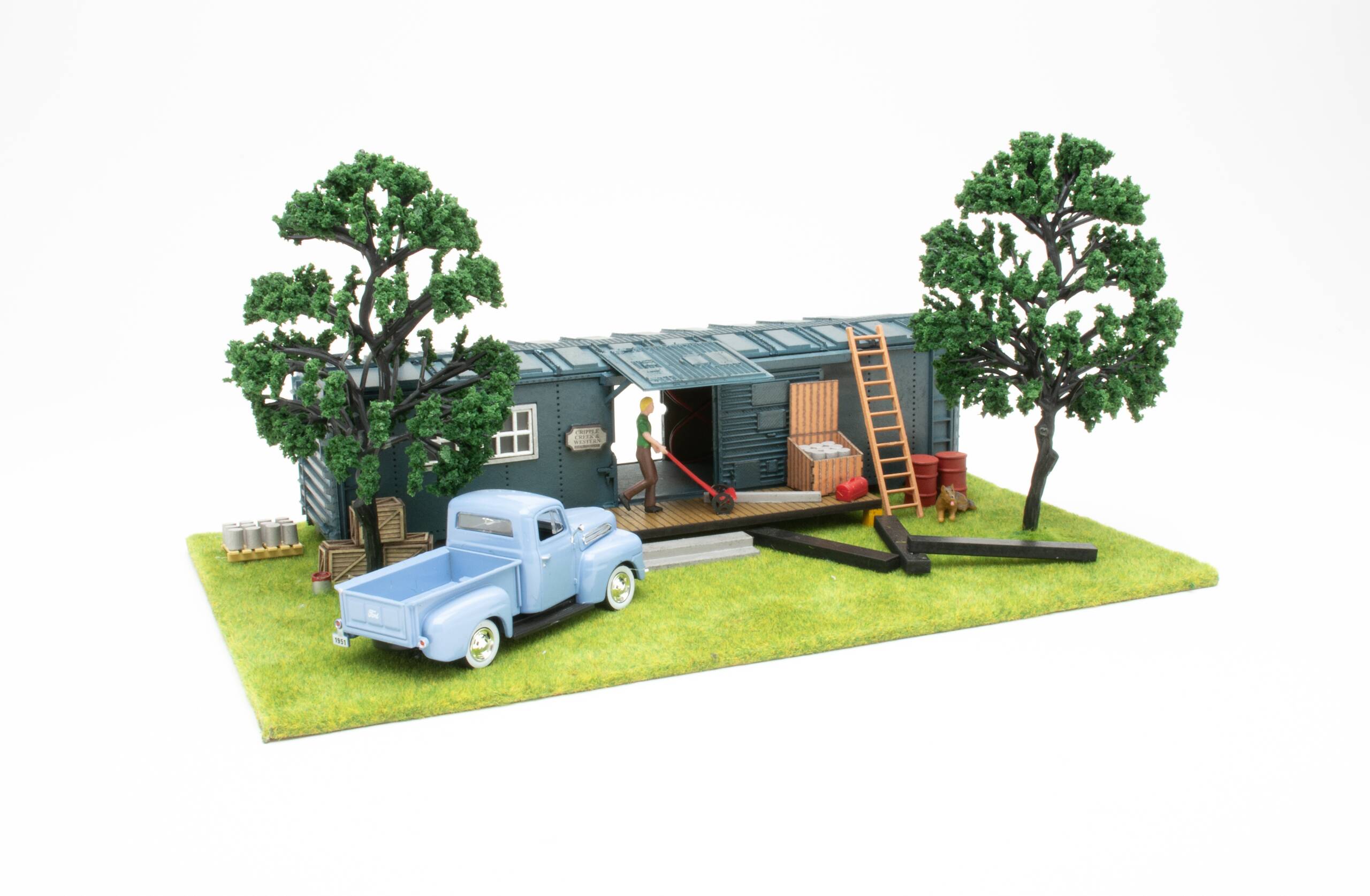A Big Boy for small layouts
Several models of the Union Pacific Big Boy have been produced for the O gauge model railroaders, including a selective-compressed model from MTH Electric Trains RailKing line. MTH recently announced a new production run of O gauge Big Boys in its RailKing Imperial line. The model will be available in four road numbers and will include a range of new features as well as the company’s latest ProtoSound 3.0 sound and control package. In the meantime, enjoy this review of a previous RailKing Big Boy, which appeared in the September 2003 issue of Classic Toy Trains magazine.
In 1996, the first MTH RailKing articulated locomotive – the No. 30-1107 Union Pacific Challenger 4-6-6-4 – rolled onto tinplate track and created quite a stir. Regardless of its reduced dimensions, no manufacturer had ever offered an articulated, die-cast metal steamer for the small layout, tight-radius crowd.
Its success heralded 1997’s Allegheny 2-6-6-6, 1998’s Big Boy 4-8-8-4, and 1999’s 4-8-8-2 Cab-Forward steamers. Simply put, these were notable models that gave O-31 operators the chance to run big power at a moderate price.
A lot has happened since then. Lionel and K-Line have produced articulated steamers for O-31 track, and as the manufacturers jockey for market share, the levels of exterior detail has gone up and prices have come down. And need I even mention the electronics revolution that has transpired?
We’re glad to see the second product out of MTH’s new South Korean locomotive factory is a re-issue of the RailKing Big Boy 4-8-8-4, now with ProtoSound 2.0 circuitry inside. So how does a late 1990s model stack up in appearance to 2003’s uber steamers? Not bad at all.
Someone recently asked me whether I tested a high-dollar Lionel or MTH Premier line locomotive differently from a more moderately priced steamer like a LionMaster Challenger, K-Line Big Boy, or RailKing Big Boy. The answer is “not at all.” Whether the product is designed for O-31 curves or O-120 curves, it all boils down to appearance, performance, and value.
We recently tested the K-Line Big Boy and the LionMaster Challenger, so both were fresh in our minds as we looked over the new RailKing die-cast metal Big Boy.
The model’s pilot has the clear look of a Big Boy, with its distinctive pilot, hinged access hatches, Union Pacific shield, and headlight. Deck details include rivets and grab irons, but if the light catches it right you can see two circles that appear to be mold markings.
The smokebox casting is crisp, but it begs for an add-on handrail instead of its cast-in version. The marker lights are a step above the egg-shaped, cast-in style found on many O gauge engines, but they fall short of the add-on lamps that you expect to find on a $700 locomotive.
The boiler casting is smooth and free of any defects. I’d rate it as a nice looking as any of the RailKing steamers I’ve examined over the years. There are plenty of cast-in details like rivets, seams, bands and hinges. Of special note are the dozens and dozens of rivets cast into the sides of the firebox.
Add-ons include handrails that run that the sides of the boiler, a bell, a whistle, grab irons on the cab sides, and pop-off valves in the middle of the boiler.
The cab has an attractive backhead. A red bulb provides the firebox glow. The two figures are worth mentioning. Instead of just sitting there, the engineer is reaching out, perhaps for the whistle cord and the fireman is using his hand, perhaps to emphasize some point in the discussion. Not bad at all!
I’ve saved measurements for last simply because there is no pretense that this is a full O scale model. The RailKing Big Boy from its pilot to the rear of its tender excluding the coupler, is 27.5 inches long or 110 feet in O scale (80 scale feet for the locomotive, 34 scale feet for the tender). The real Big Boy is 124 feet long (85 for the locomotive, 39 feet for the tender). The model’s drivers are 60 scale inches in diameter compared to the prototype’s 68-inch drivers.
Our sample Big Boy sat on my desk for several days. After scanning the product countless times, I found a few spots where a bit too much paint had been applied, blurring some of the casting detail. But otherwise the gray, black, and silver paint application looked just fine.
This hunka-hunka-burnin’ train had solid performance numbers on the test track. Our low-end speed average with ProtoSound 2.0 speed control was 4.38 scale mph while the high-end average was 74.6 scale mph. The drawbar pull for this monster was a stump-pulling 3 pounds, 4 ounces.
ProtoSound 2.0-equipped locomotives operating in command-control mode using MTH’s Digital Command System continue to impress me. I categorize these features as “must use,” such as the rail clickety-clack sounds and odometer, to “whimsical,” such as the trainwreck noises.
The feature I like best – and which rules the roost as far as I’m concerned – is the incredibly solid cruise control. Bring the locomotive up to the speed you want, let go, and the system takes care of any variations due to curves or grades.
There seems to be a general movement afoot in the industry to reduce the number of center-rail pickup rollers on trains, and the Big Boy is no exception. You’ll find just two pickup rollers on the locomotive, spaced nearly 10 inches apart, and none on the tender. The tender-based sound system is powered through the tether from the locomotive. The ProtoSound 2.0 volume control knob is on the tender, as is the smoke on/off switch.
I was a little disappointed by the Big Boy’s sound reproduction. All previous ProtoSound 2.0 gear I’ve heard was substantially better than their original ProtoSound predecessors. But the Big Boy’s sound reproduction on this model is just “okay.”
To me it lacks the range and gusto of other ProtoSound 2.0 power, but others on the CTT staff disagreed with me.
On O-31 and O-42 curves, the Big Boy shows lots of cab overhang.
On one CTT home layout, the rear edge of the cab even touched trackside catenary poles on a curve that, until now, had never caused a problem. Esthetically, the locomotive and tender are far more pleasing rounding wider curves.
The RailKing Big Boy has a good balance of detail and performance – especially with its ProtoSound 2.0 features – that allows operators ,with moderate-sized layouts and train budget caps to get some big-time steam power on the track.
O GAUGE UNION PACIFIC 4-8-8-4 BIG BOY BY MTH RAILKING
Price: $699.95 (no. 30-1287)
Features: O-31 operation, die-cast metal construction, smoke generator, coil coupler, and ProtoSound 2.0 circuitry with cruise control
Pros: A dream engine for any O-31 operator
Cons: Wide overhang, sound reproduction was so-so
Made in the Republic of Korea for MTH





